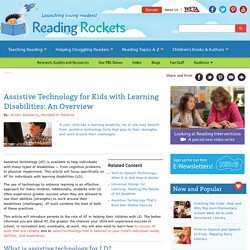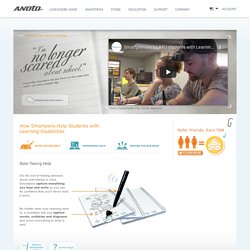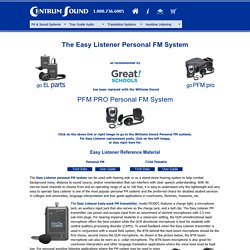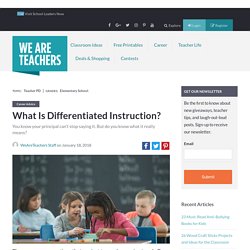

LinkedIn: Log In or Sign Up. Math, Language Arts, Science, Social Studies, and Spanish. A Collaborative Learning Community.: RCampus. Special Need & Education Resources for Grades K-12. Inform yourself about curriculum strategies and classroom management for students with different learning needs and abilities.
We have resources on everything you need to know about teaching special needs students effectively. You'll find information for teaching students across the Autism spectrum, as well as for teaching gifted students. We'll help you figure out ways to create an inclusive classroom, adapt and supplement your classroom materials, make assessment accommodations, and provide you with other useful tips.
Featured Editor's Picks Printables Choose from our list of printables to help you with special needs students. Classroom Management & Discipline Our collection of Classroom Management and Discipline resources will help new teachers as well as veteran teachers. Assessment Accommodation. Meeting the Needs of Special Needs Students in the Inclusion Classroom. It can be very difficult teaching special needs children within inclusion classrooms.

Both disabled and non-disabled students learn together in inclusion classrooms. It can be exceptionally difficult for teachers overseeing crowded inclusion classrooms. However, various strategies exist for teachers working with both disabled and non-disabled students in the same classroom. National Organization on Disability. NCLD - National Center for Learning Disabilities. Special Needs Book Review. Scaffolded Math and Science. Adapting for Autism. Assistive Technology for Kids with Learning Disabilities: An Overview. Assistive technology (AT) is available to help individuals with many types of disabilities — from cognitive problems to physical impairment.

This article will focus specifically on AT for individuals with learning disabilities (LD). The use of technology to enhance learning is an effective approach for many children. Additionally, students with LD often experience greater success when they are allowed to use their abilities (strengths) to work around their disabilities (challenges). AT tools combine the best of both of these practices. What is assistive technology for LD? AT for kids with LD is defined as any device, piece of equipment or system that helps bypass, work around or compensate for an individual's specific learning deficits.
In general, AT compensates for a student's skills deficits or area(s) of disability. AT can increase a child's self-reliance and sense of independence. What types of learning problems does assistive technology address? Listening Math Organization and memory. Never Miss A Word. Note-Taking Help It's the end of feeling stressed about note-taking in class.

Smartpens capture everything you hear and write so you can be confident that you'll never miss a word. No matter what your learning style is, a smartpen lets you capture words, scribbles and diagrams and syncs everything to what is said. Homework and Organization Help Livescribe lets you organize your notes to fit your learning style. Convenient play back controls on your Livescribe paper allow you to slow down or speed up the audio recording, control volume and even bookmark key information.
Don't settle for confusing notes. Phonic Ear Easy Listener Personal FM Hearing Assistance System. As recommended by has been replaced with the Williams Sound PFM PRO Personal FM System Click on the above link or right image to go to the Williams Sound Personal FM systems.

For Easy Listener replacement parts, click on the left image, or stay right here for: Easy Listener Reference Material Personal FM 723A Toteable The Easy Listener personal FM system can be used with hearing aids or as a stand-alone hearing system to help combat background noise, distance to sound source, and/or reverberation that can interfere with clear speech understanding. The Easy Listener body-pack FM transmitter, model PE300T, features a charge light, a microphone jack, an auxiliary input jack that also serves as the charge jack, and a belt clip. System may be used in noisy environments, the DLM directional microphone offers the best solution. The Easy Listener FM receiver, model PE300R, features a volume control with built-in on-off switch as the only user operated control. Home. What Is Differentiated Instruction? - We Explain What This Teaching Method Really Means.
There are many questions that are just too embarrassing to ask: Do fish pass gas?

There’s the speed of light and the speed of sound. Is there a speed of smell? What is differentiated instruction? You know, that phrase that gets whipped around the faculty meeting like a shuttlecock during a badminton match? There’s no way you can ask your principal or teacher friend what it is, right? Differentiated instruction is an approach that helps educators tailor their teaching so that all students, regardless of their ability, can learn the classroom material. Here’s an analogy: Imagine going into a department store to buy jeans and finding the same pair on every rack. Unfortunately, many times a similar strategy is used in the classroom.
Differentiated instruction honors students’ diverse backgrounds and learning styles. First, teachers must know their students well. Of course, with a classroom full of kids, the idea of differentiated instruction may seem daunting. Daltonize.org. An Accessible Online Library for people with print disabilities. Unlocking greatness in the 1 in 5 who learn differently.
Vooks — Storybooks Brought to Life. Response to Intervention.